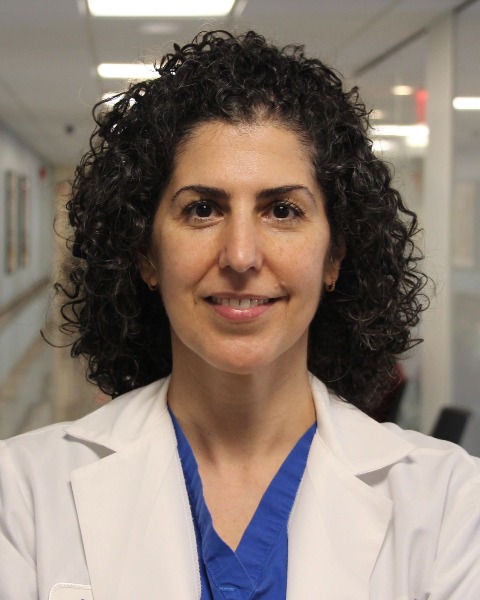Hepato-pancreato-biliary
E252: Circulating Tumor DNA in Pancreas Cancer Patients Receiving Neoadjuvant Therapy: Preliminary Results from a Prospective Study

Noah A. Cohen, MD (he/him/his)
Associate Professor
Icahn School of Medicine at Mount Sinai
NEW YORK, New York, United States
Noah A. Cohen, MD (he/him/his)
Associate Professor
Icahn School of Medicine at Mount Sinai
NEW YORK, New York, United States
Noah A. Cohen, MD (he/him/his)
Associate Professor
Icahn School of Medicine at Mount Sinai
NEW YORK, New York, United States- RO
Riona O'Donnell, BA
Clinical Research Coordinator
Icahn School of Medicine at Mount Sinai, United States - ST
Samantha Troob, BS
Research Coordinator
Mount Sinai School of Medicine, United States - GW
Giacomo Waller, MD
Complex General Surgical Oncology Fellow
Icahn School of Medicine at Mount Sinai, United States - DC
Deirdre Cohen, MD
Director of Gastrointestinal Oncology
Icahn School of Medicine at Mount Sinai, United States - PK
Peter Kozuch, MD
Associate Professor
Icahn School of Medicine at Mount Sinai, United States - SD
Sirish Dharmapuri, MD
Assistant Professor
Icahn School of Medicine at Mount Sinai, United States - MS
Max Sung, MD
Associate Professor
Icahn School of Medicine at Mount Sinai, United States - LR
Lakshmi Rajdev, MD
Professor
Icahn School of Medicine at Mount Sinai, United States - CA
Celina Ang, MD
Associate Professor
Icahn School of Medicine at Mount Sinai, United States - CC
Camilo Correa, MD
Assistant Professor
Icahn School of Medicine at Mount Sinai, United States 
Umut Sarpel, MD, MSc (she/her/hers)
Chief, Division of Surgical Oncology
Beth Israel Deaconess Medical Center, United States- GG
Ganesh Gunasekaran, MD
Associate Professor
Icahn School of Medicine at Mount Sinai, United States - SH
Spiros Hiotis, MD, PhD
Professor
Icahn School of Medicine at Mount Sinai
New York, New York, United States - SP
Sofya Pintova, MD
Assistant Professor
Icahn School of Medicine at Mount Sinai, United States - JP
- EW
ePoster Abstract Author(s)
Submitter(s)
Author(s)
Neoadjuvant therapy (NAT) is administered frequently to patients with localized pancreatic ductal adenocarcinoma (PDAC) prior to surgery. Most tumors will have minimal/no pathologic response to NAT, which is associated with worse survival. Biomarkers are needed to predict clinical and pathologic response to NAT, and circulating tumor DNA (ctDNA) is such a potential biomarker.
This prospective pilot study assessing ctDNA in patients with localized PDAC who receive NAT is ongoing, and herein we report the initial results of ctDNA feasibility and clinical correlation with ctDNA changes.
Methods:
The study is enrolling adult patients with newly diagnosed resectable and borderline-resectable PDAC who receive NAT. Pre-treatment pathologic material must be available for whole exome sequencing (WES). ctDNA is being collected monthly during NAT, on day of surgery, and during the surveillance period up to 5 years. Tissue WES and ctDNA processing and analysis are being conducted by Natera. If biopsy tissue is deemed inadequate for WES analysis, WES analysis is reattempted from the surgical specimen with neoadjuvant ctDNA samples stored by Natera and ctDNA measurement performed retroactively.
Results:
Eight patients were enrolled July 2022 - August 2023. Median age was 71 years with 5 males and 3 females. All patients received NAT: 4 received FOLFIRINOX; 3 received gemcitabine/nab-paclitaxel; 1 received FOLFIRINOX followed by gemcitabine/nab-paclitaxel due to intolerance. 6 of 8 patients underwent surgery to date with 1 patient withdrawing from study and not a surgical candidate, and 1 patient currently receiving NAT. Feasibility demonstrated that WES necessary to perform ctDNA analysis was possible in 50% (4/8) of PDAC biopsy specimens. An additional 2 patients had WES performed on the surgical specimen. Of the 6 patients where WES was feasible from either biopsy or surgical specimen, ctDNA was detected in 2 patients (33%). ctDNA was detected in patient #03, which increased prior to resection while CA 19-9 was declining (Figure 1), imaging demonstrated stability of the tumor and pathologically minimal tumor response (CAP 3) was seen. Patient #03 experienced rapid postoperative recurrence and clinical deterioration and was enrolled in hospice.
Conclusions:
While ctDNA may improve clinical decision making in PDAC patients, early results of this study show that sensitivity of ctDNA detection in patients with localized PDAC is low with the current platform. Improved technological developments are needed to enhance WES sensitivity and ctDNA detection.
Learning Objectives:
- Understand the feasibility of assessing ctDNA in patients with pancreas cancer receiving neoadjuvant chemotherapy.
- Understand the role of ctDNA as a biomarker in patients with pancreas cancer receiving neoadjuvant chemotherapy
- Understand the challenges of using ctDNA as a biomarker in patients with pancreas cancer receiving neoadjuvant chemotherapy
